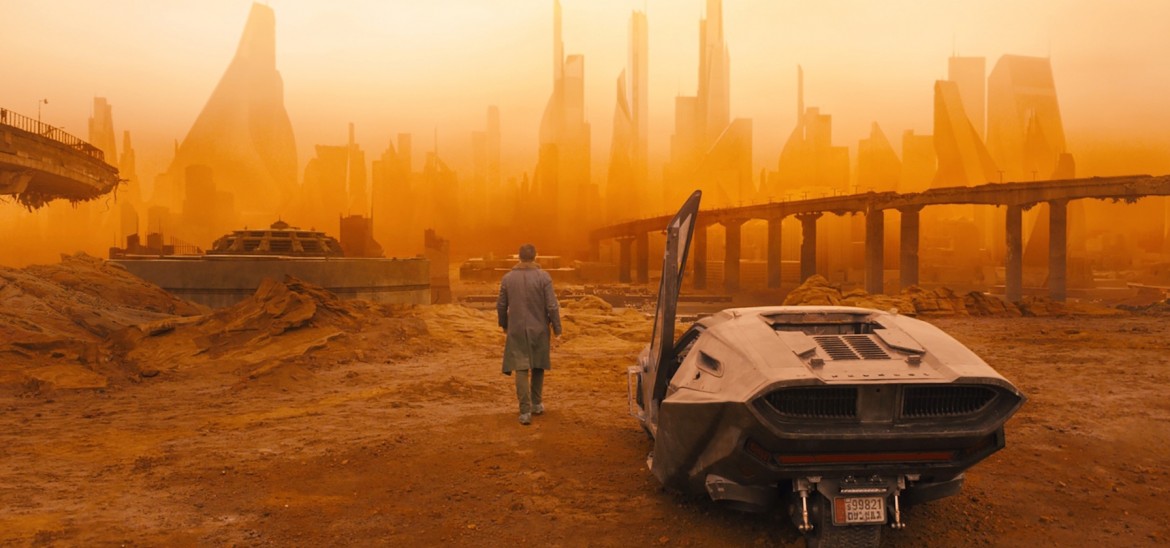Into Film Clubs
Find out everything you need to know about starting an Into Film Club.



Thirty-five years ago, the groundbreaking Blade Runner was released. Directed by legendary British filmmaker Sir Ridley Scott, it was based on the novel Do Androids Dream of Electric Sheep? by cult author Phillip K. Dick, whose work has also inspired films such as Minority Report, A Scanner Darkly and The Adjustment Bureau. Set in a dystopian 2019 Los Angeles, Blade Runner presented audiences with a future-Earth unlike anything seen before: a rain-sodden, decaying world, in which synthetic humans known as 'replicants' are sent to work in off-world colonies. When a group of replicants return to Earth to find their creator, they are hunted down by special LAPD detectives known as 'blade runners', including Harrison Ford's Rick Deckard.
Not a hit upon release, it has since become one of the most influential films of all time. Like The Terminator and The Matrix, Blade Runner is a key example of "cyberpunk", a genre that blends science-fiction with the urban detective world of film noir. Its impact can be seen in television, music, Japanese anime, art, and fashion, as well as in film. Largely due to disputes between the director and the studio, many different versions of the film exist - at last count there are five different cuts! - and fans of cult cinema endlessly debate which is the superior version. Ever since its release, a sequel has been rumoured, but never materialised... until now.
Blade Runner 2049 - as the sequel is titled - is directed by French-Canadian Denis Villeneuve, previously responsible for Arrival and Sicario, with Sir Ridley Scott remaining on board as a producer. Three decades after the events of the first film, a new blade runner known only as 'K' unearths a long-buried secret that has the potential to plunge the remainder of society into chaos. The discovery leads K on a quest to find a long retired Deckard, who's been missing for 30 years.
Although a sequel, the film stands on its own and audiences do not need to have seen the first film in order to follow the story. However, fans of the original will definitely recognise the world depicted here. Much of the story again takes place in a dystopian Los Angeles; a nightmarish place that feels both plausible and dreamlike, in which darkness seems constant, and a smoggy atmosphere does little to conceal the sleaze and decay. The weather is even harsher, the oceans more out of control and the environment more toxic - all elements which the filmmakers were keen to emphasise in every aspect of the design, from the architecture to the clothing. In 2049, the atmosphere is so thick with pollution that individually tailored advertisements can simply be projected into the air. With society seemingly rotting - morally as well as physically - everything seen in the film is designed to represent a culture striving for survival. Audiences that have seen Spielberg's A.I. may find that the world resembles that film's Rouge City.
However this story also goes beyond Los Angeles. K's quest leads him deep into the San Diego area, where he crash-lands on a vast landfill that stretches as far as the eye can see, and out of California and into Las Vegas, a city unrecognisable from the neon-lit metropolis we know. The colour and light are all reduced to an orange/red haze; the result of a catastrophic blast that left the city in ruins.
Seeking to tell an intimate story in epic fashion, much of the credit for the film's remarkable design comes down to Villeneuve's decision to use as many practical sets as possible. Rather than relying on CGI and green screen, physical environments were created for the actors to engage in, allowing for a deeper, more creative collaborative culture for the filmmakers to work in. Cinematographer Roger Deakins has also created a succession of astounding images, unlike anything seen on the big screen before: shots that both reference and expand on those seen in the original, making Blade Runner 2049 a breathtaking visual experience.
Similar to the works of Russian filmmaker Andrei Tarkovsky, both Blade Runner films examine deep philosophical and ethical issues around what it is to be human, the nature of memory, and what it is to have a soul. Another key theme is the blurring of lines between humans and technology. This is developed further in 2049, partly through an intriguing subplot that captures K's romantic relationship with a holographic companion named Joi - something that may remind viewers of the futuristic vision of romance depicted in Spike Jonze's Her.
Way ahead of its time, the original Blade Runner raised a series of concerns that have become increasingly significant in the real world since its release. As we approach the time the film was set (2019), its themes of overpopulation, climate change, urban decay and genetic engineering only seem more relevant.
All of these themes are expanded on in Blade Runner 2049. Its world is not intended to reflect our own - it is more an extension of that seen in the original - but the dystopian themes that are raised are bound to provoke discussions around what humans are doing to the planet, making it another instance of science fiction raising important environmental issues, similar to The Day After Tomorrow, Avatar and Interstellar.
With the original Blade Runner being so revered, the new film has a lot to live up to. Whether it can capture the imagination of audiences in the same way, or is destined to become lost in time, remains to be seen. Whatever happens, the legacy of Ridley Scott's masterpiece will be visible in cinemas and beyond for a long, long time to come.
Listen to our interview with Blade Runner 2049 Art Director Lydia Fry, recorded at the Into Film Festival 2018, who explains her job role and how she approached designing for the film. Also available on itunes.
Explore the themes of the film further with our Into Film Recommends podcast below, or log in to SoundCloud to download the podcast and listen on the go.
The Into Film Recommends Podcast Series is also available on iTunes.
Viewing 4 of 4 related items.

Get in touch with your article ideas for the News and Views section.